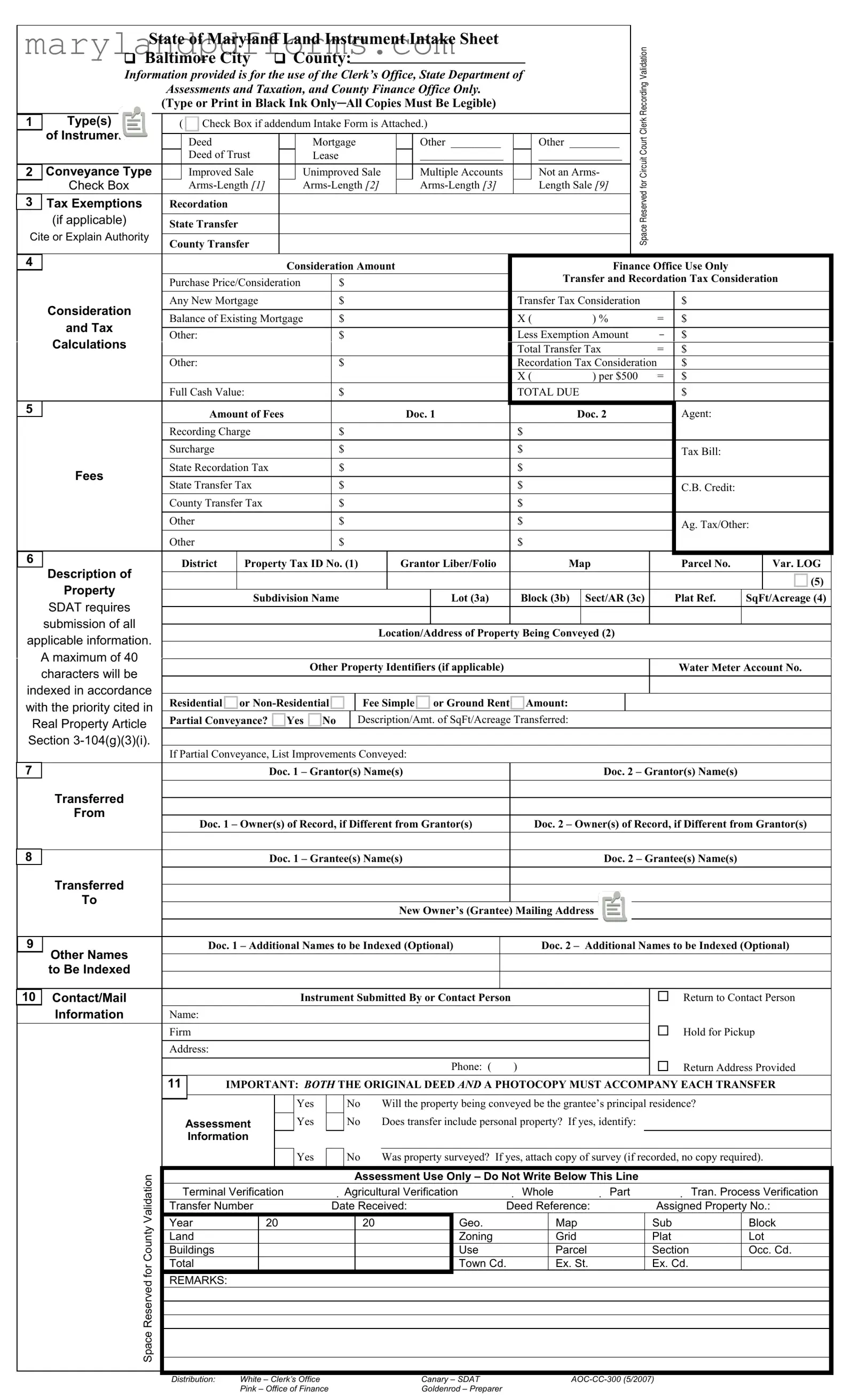The Maryland Sheet form, also known as the Land Instrument Intake Sheet, is a document used for recording various types of property transactions in Maryland. It is primarily utilized by the Clerk’s Office, the State Department of Assessments and Taxation, and the County Finance Office. This form collects essential information regarding the transaction, including the type of instrument being recorded, property details, and tax considerations.
Any individual or entity involved in a property transaction in Maryland must complete the Maryland Sheet form. This includes sellers, buyers, and their representatives. If you are transferring property through a deed, mortgage, or other legal instruments, this form is required to ensure proper recording and assessment.
The Maryland Sheet form requires several key pieces of information, including:
-
Type of instrument (e.g., deed, mortgage)
-
Conveyance type (e.g., improved sale, unimproved sale)
-
Consideration amount (purchase price)
-
Property details (address, tax ID number, etc.)
-
Names of grantors and grantees
-
Contact information for the person submitting the form
It is crucial to provide accurate and complete information to avoid delays in processing.
Fees vary depending on the type of transaction and the amount of consideration. The form outlines various charges, including:
-
Recording charges
-
State recordation tax
-
County transfer tax
-
Other applicable fees
All fees must be calculated and included on the form to ensure proper processing.
Is it necessary to submit both the original deed and a photocopy?
Yes, both the original deed and a photocopy must accompany each transfer when submitting the Maryland Sheet form. This requirement ensures that there is a record for both the Clerk’s Office and the submitting party.
If the Maryland Sheet form is filled out incorrectly, it may lead to delays in processing the property transfer. In some cases, the form may be rejected, requiring resubmission with the correct information. To avoid complications, double-check all entries for accuracy before submission.
Yes, assistance is available for completing the Maryland Sheet form. Many local real estate professionals, such as attorneys and title companies, can provide guidance. Additionally, the Clerk’s Office may offer resources or staff to help with questions regarding the form.
